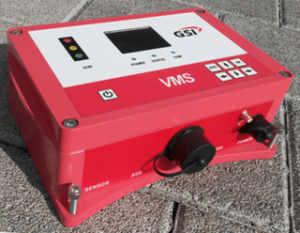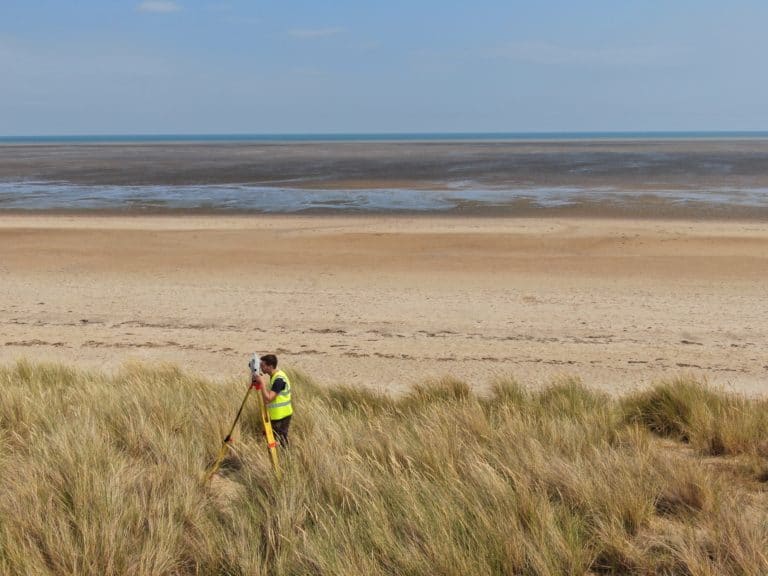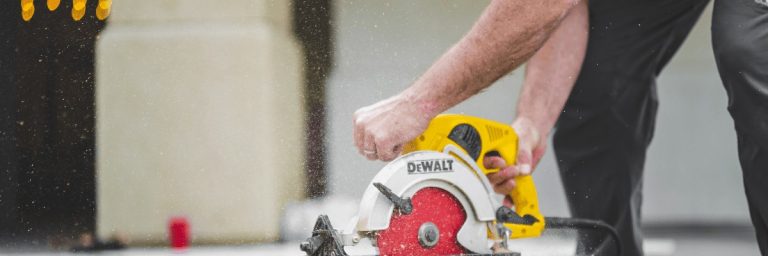Movement Monitoring Survey
Precisely monitoring structures across London & The UK.
Working with engineers, architects and surveyors, we help satisfy party wall awards and give clients peace of mind during construction and engineering projects.
- We can quickly get to your site allowing your project to progress.
- Quickly analyse and observe movements (or lack of).
- Operating since 2013, we know monitoring surveys inside out.
- We carry £500,000 professional indemnity insurance.
- Large and small sites across the United Kingdom.
Need a Quote For Your Project?
In search of immediate pricing? Obtain an instant online estimate or secure a fixed cost for your project. Please use the buttons below.


Full TSA Member
THS Concepts are an accredited member of The Survey Association body.
UK Wide Service
We operate nationwide across London & the United Kingdom.
Years Of Experience
THS Concepts was formed over 10 years ago in 2013.
Fully Insured
£1 million in liability cover, employers' and public liability insurance.
Excellent Service
We take great pride in our exceptional 5-star ratings on both Google and Trustpilot
Introduction to Movement Monitoring
Structural movement monitoring involves attaching fixed targets to a building or structure to observe movements in plan and elevation over time. The collected data is presented in both report and graph formats, enabling the identification of movement patterns. If certain predefined movement triggers are reached, this could initiate further investigations and/or necessary remedial activities.
Movement monitoring plays a crucial role in projects where tracking movement is essential. Commonly, this includes works adjacent to shared structures (party walls), like basement excavations, underpinning, and demolition. Particularly in London, where basement developments are widespread, we have extensive experience in installing and monitoring a variety of projects, from modest basement constructions to large-scale, multi-million pound refurbishments.
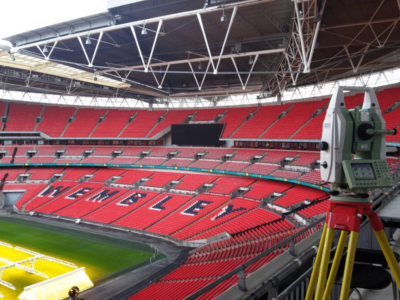
Typical Movement Monitoring Projects
Basement Constructions and Extensions
Particularly in urban areas where properties are closely packed, such as in many parts of the UK. Monitoring is crucial when excavating for basements to ensure the stability of neighbouring structures, especially party walls.
Underpinning Works
This is often required for structural stability or as part of basement creation. Monitoring ensures that the underpinning process does not adversely affect the surrounding soil and structures.
Demolition Adjacent to Other Structures
Monitoring is essential to ensure that the demolition process does not cause damage to nearby buildings, particularly in dense urban environments.
Historic or Listed Building Renovations
These buildings often require careful monitoring to preserve their structural integrity during any renovation or restoration work.
Property Renovations Involving Structural Alterations
When load-bearing walls are altered or removed, there's a risk of movement which can impact adjoining properties.
Construction of New Buildings
Ensuring that the new construction does not negatively impact the structural integrity of neighbouring buildings.
How Does Our Monitoring Survey Service Work?
Step 1 - Proposal Plan Produced [Free Of Charge]
Should you not yet have received any specifications from your Structural Engineer, we are able to provide a complimentary initial monitoring specification document for your contractors' / engineers approval.
Step 2 - Monitoring Scheme Installed
Our experienced surveyors visit your site and undertake ongoing surveys to determine movement (or lack of) over time. We set up the survey points and can advise on optimal positions to place the points whilst on site.
Step 3 - Post Setup Report
Following the initial setup, we issue you with a thorough report describing important details of the setup, this includes point locations, setting up positions and any other considerations.
Step 4 - Monitoring Begins
Once you're set to commence, we will schedule regular site visits at predetermined intervals (weekly, monthly, etc.) to survey the positions of the monitoring points. After each visit, we'll return to our office to process the data and subsequently deliver the results directly to you.
Step 5 - Removing The Monitoring Points
Upon completion of the monitoring process, THS Concepts can arrange a site visit to detach the monitoring points from your wall. The targets we employ are cost-effective and disposable, allowing for easy removal by your contractor if required.
Recent Google Reviews
“Having worked with THS for several years now, each project is treated with high professionalism every time. We would highly recommend their team.
James Furzer – JFD Architecture
Google Review
“We have used THS Concepts for multiple surveys from topographic to drone photogrammetry, they are professional and prompt and deliver exactly what is requested. Highly recommended.”
David Hopper – Marmus Engineering
Google Review
“Great service. Quick response to quote request, all my queries responded promptly. Good drawings delivered and were delivered before time agreed.”
Nuria Bargueno
Google Review
Need a Quote For Your Project?
In search of immediate pricing? Obtain an instant online estimate or secure a fixed cost for your project. Please use the buttons below.
Don’t fancy filling out the form? Get in touch via email or telephone:
Email: info@ths-concepts.co.uk | Call: 020 8935 5160

Frequently Asked Monitoring Survey Questions
What is a movement monitoring survey?
A fixed position monitoring survey is the method of monitoring a set location on a building / wall / structure and observing movement in the horizontal and vertical planes over time.
Fixed position monitoring is used for a number of projects ranging from small basement projects to large infrastructure projects such Crossrail tunnel project under London.
The monitoring project always starts with the initial setup of the monitoring targets and local survey control network. The targets are fixed to the structure in the pre-designated locations utilising either glue or drilled screws.
Without a fixed monitoring point to resurvey each time, the consistency will be poor or non-existent. Fixed points are installed on to the structure and usually consist of survey prisms or reflective target stickers. When using prisms, they are typically secured using screws drilled into walls or using high strength glue.
A local survey control network also needs to be installed. This involves placing survey targets (prisms or reflective survey points) away from the site. These are used by the total station as a way of calculating its precise position each time a monitoring survey needs to be undertaken.
A monitoring survey is undertaken using a piece of equipment called a total station. A total station is a high accuracy optical instrument that is used to measure distances and angles. Total stations are usually mounted on tripod legs, whereby the operator can look through the lens and record survey points. In some cases, automation is required If so a total station can be left in a safe location and operated remotely.
At each survey interval, the total station has to be set up using the local control network. Once set up accurately, the monitoring survey process can be undertaken. Each monitoring point is precisely surveyed using the total station and recorded to the instrument.
Once this data has been reached the office, it is uploaded to the monitoring survey software, which can generate data to illustrate movement (or lack of) over time.
How much does a monitoring survey cost?
The cost of a movement monitoring survey for a typical residential basement project in London varies based on the project’s requirements and complexity. Initial setup fees range from £500 to £1000, plus VAT. Each subsequent survey visit and report costs between £200 and £400, plus VAT. For more intricate projects such as commercial or infrastructure projects then the costs are likely to be much higher.
Why is monitoring a building during construction so important?
Monitoring a building during construction is important for several reasons:
- Quality control: Monitoring allows you to ensure that the construction is being done according to the plans and specifications, and that the materials being used are of the required quality.
- Safety: Monitoring can help identify and address potential safety hazards during the construction process, such as unstable scaffolding or unsafe work practices.
- Budget and schedule: Monitoring the construction process can help you stay on track with the project budget and schedule, allowing you to identify and address any potential delays or cost overruns.
- Compliance: Monitoring the construction process can help ensure that the project complies with all relevant building codes, regulations, and standards.
Overall, monitoring a building during construction is essential for ensuring that the project is completed successfully and to the required quality standards.
What projects require movement monitoring surveys?
A monitoring survey process is usually undertaken on the advice of a professional, such as a Structural Engineer or Party Wall Surveyor. If a building or structure is a risk of movement, then a monitoring survey is usually commissioned.
Typically, monitoring surveys are commissioned when undertaking heavy construction works next to existing buildings. Some examples include:
- Piling works
- Underpinning
- Basement excavation
- Demolition
A monitoring survey scheme can also be commissioned where an insurance claim is being checked.
How often do I need my property monitored?
It is very important that you have at least one survey prior to any works being undertaken. This is to ensure you have a base reading to compare any future readings against. If you start after works have taken place, then you may miss any initial movement in your structure.
During major operations such as digging, underpinning, concrete pours etc then we recommend a survey every week until this is completed.
Once the intense, heavy works have been completed then this can be reduced to say a monthly visit until the internal fit out works begin. Once the internal fit out (plastering / painting / decorating) has begun, then any movement will likely be limited, so the monitoring can cease.
We recommend speaking to your project manager or party wall surveyor about monitoring intervals. Some projects require more frequent intervals, whilst some specify less!
How can the movement data be used?
Monitoring survey data is usually presented in report and graph format. The reports will outline movement over time. It’s common to see reports showing movement compared to the previous set of readings, as well as the initial set of readings.
Graphs can also be produced to show the movement in a graphical sense. Graphs can help show when movement started occurring.
Movement monitoring surveys are a good way to help prove or disprove that movement within a structure has been undertaken. This can help with future claims, either made for or against.
Diligent contractors ensure that they minimise movement as a result of construction, however claims from neighbours can still arise.
The movement monitoring reports produced can demonstrate movement or lack of overtime. This can be used in counter-claim situations whereby neighbours insist that damage has occurred.
Another purpose of monitoring surveys is from a safety perspective. If a building is moving during construction works, then this can be identified. If a movement exceeds a certain level, then this can be flagged. The potential source of the movement can be found and mitigated against prior to any problems that could potentially endanger.
How to save money on your monitoring survey?
Saving money when possible whilst undertaking a project is important. Below, we explain how this can be done when commissioning a monitoring survey company.
Reduce the amount of targets/locations
When your Structural Engineer or Party Wall Survey is looking to commission a survey, they usually don’t consider the company who has to undertake the works. Complicated monitoring survey proposals that require multiple total station setup locations add a lot of complexity and time to a job.
Keeping things simple
Simplifying what is required can often make little difference to the effectiveness of a monitoring survey, and can unlock considerable savings if the following elements are considered:
- Can the survey company easily set up with access to their off-site control network?
- Can we reduce the number of monitoring points?
- Are the monitoring points safe and easy to install?
Increase the monitoring interval
Often a surveying company will quote for a monitoring survey job based on a per-visit basis. A simple way of reducing the overall cost of a monitoring survey is to simply reduce the amount of surveys.
- Can a weekly specification be pushed to a 2 weekly interval?
- Can we do fewer surveys whilst less intense work is being undertaken on site?
- Is it possible to pause the survey work whilst the site is temporarily shut down?
Check their experience
The experience of your monitoring survey team has the possibility of significantly increasing your costs. An incompetent survey company can incorrectly report results and show general inconsistencies. It is important you check the following aspects of a survey company prior to appointment.
- Experience in undertaking monitoring surveys
- Level of insurance for the works.
- What is and isn’t included in their price.
- Reviews from others (Google, Trustpilot ETC).
The history of basement building in London
Basement construction has a long history in London and has been a popular way to add additional space to properties in the city for many years. In the 19th century, it was common for basements to be used for storage and as service areas for the home, such as the kitchen and laundry. As the city’s population grew and land became more expensive, basements were increasingly used for living space, and it became common for properties to have basements that were fully finished and used as additional bedrooms or living areas.
In recent years, the demand for additional space in London has continued to increase, and basement construction has become even more popular as a way to add value to a property. However, the process of building a basement can be complex and can involve significant excavation and construction work, which can cause disruption to neighbours and the surrounding area. Despite this, many people in London choose to undertake basement construction projects due to the benefits they can bring in terms of additional space and increased property value.
Why work with THS Concepts?
We provide you with accurate data and easy to understand survey reports. We have been engaged on a number of projects ranging from small basements to large earth moving projects.
Our clients receive great service from us, which is reflected in our 5-star reviews on Google and Trustpilot. We ensure you are happy before, during and well after the project has ended.
As a professional surveying company, we carry all the relevant insurance to give our clients confidence in what we produce. We offer a money-back guarantee on all our work and have £5 million in both professional and public liability insurance.
Where do you undertake surveys?
We undertake monitoring surveys in the counties surrounding our offices. These include:
- London
- Essex
- Kent
- Hertfordshire
- Sussex
- Surrey
- Buckinghamshire
However, we have been much further afield within the UK and internationally. We have undertaken surveying work as far away as Liberia in West Africa.
If you would like a quote for a project, then please get in touch.
Other Monitoring Services We Offer
Crack Monitoring
We help our clients monitor cracks that are potentially opening or closing. We install demec studs or gauges to accurately record movement over time.
Following this we produce detailed reports and graphs illustrating the movement in a clear and consise manner.

Tilt Monitoring
Tilt sensors, also known as inclinometers or tilt switches, are essential for monitoring the stability and movement of structures like buildings and bridges. These devices measure the angle of inclination to detect and track changes in tilt over time, critical for identifying potential instabilities and enabling prompt corrective actions.
These sensors are advantageous due to their non-invasive installation, which preserves the integrity of structures and their surroundings. They allow for continuous, real-time monitoring, serving as an early warning system for structural issues. Additionally, tilt sensors are cost-effective and versatile, making them suitable for various structures and environmental conditions.
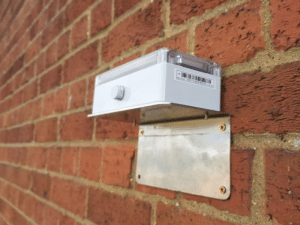
Vibration Monitoring
Our vibration monitoring survey service gives peace of mind on projects requiring 24 hours, remote, vibration monitoring. We install vibration monitoring schemes across London and the UK.
By setting up and maintaining an accurate and dependable vibration monitoring survey scheme, we give you peace of mind during your construction projects.
Usually, buildings and structures that are sensitive to movement have vibration monitoring installed. We frequently work on large-scale excavation, demolition, piling, and tunnelling projects.
From small basement builds to significant earth moving projects, THS Concepts has been working on a variety of monitoring projects. You can count on our monitoring survey team to arrive at your site quickly, set up the system, and provide you with accurate information about the vibration movement of your structures.
